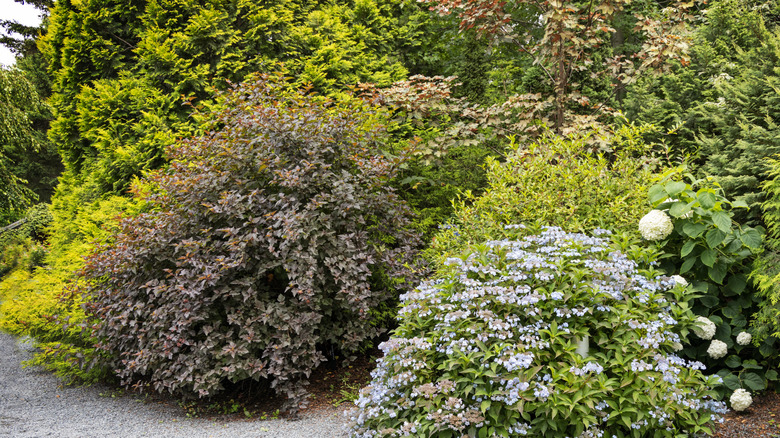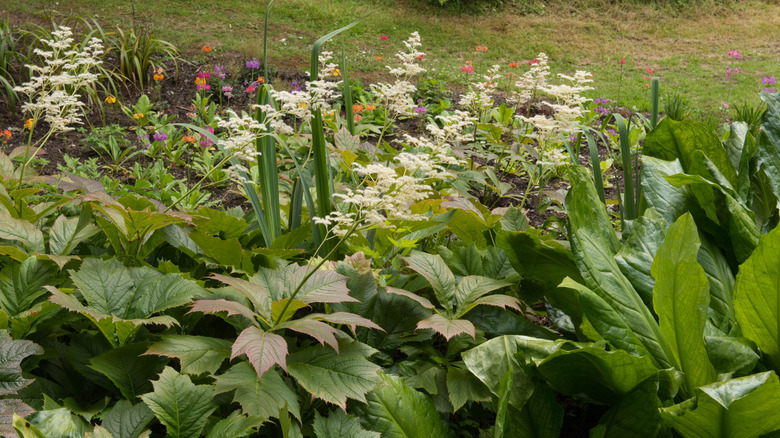The Low-Maintenance Perennial That'll Fill Your Garden With Lasting Summer Blooms
We may receive a commission on purchases made from links.
The Rodger's flower (Rodgersia spp.) can make for a lavish addition to your outdoor garden. Given its hassle-free nature and alluring varietal options, it's easy to see why many growers favor this beautiful, shapely shrub. Looking for a plant with lasting blooms? No problem. This easy-to-grow ground cover plant typically starts blooming during the earlier part of spring up until early or mid summer, with many varieties, such as the 'Bloody Wheels' (Rodgersia podophylla) plant, giving off vibrant colors as they go through the seasons.
Surprisingly, the wide-spreading foliage in this garden favorite can be just as eye-catching as its flowers. For example, the leaves on the 'Superba' (Rodgersia pinnata) variety kick off with a deep crimson-purple hue, then turn green, and finally settle on a bronze-olive tone once the plant matures. Though varying per species, the leaves on Rodger's flowers can have toothy edges and may appear leathery or slightly glossy. You can also expect this slow-growing plant to maintain its gorgeous foliage throughout the growing season, making for some pretty awesome lawn aesthetics during the cooler months.
Tips for growing and maintaining Rodger's flower stress-free
Not only is the Rodger's flower a suitable plant to feature next to garden beds, water basins, or lawn edges, but it's also one of the common, uncomplicated perennials to grow. This shade-loving flower is known to grow well in hardiness zones 4 through 8, though precautions should be taken during extreme weather conditions. It's advisable to set up measures that'll keep your Rodger's flower plant from freezing in the winter and receiving too much sun (without appropriate watering) in warmer temperatures.
These shrubs thrive in moist soil, so placing your plant in a shady area can reduce its watering needs and make care more hands-off. And like your typical perennial, these summer blooming perennials won't require those frequent back-breaking pruning sessions. However, you may need to perform a spring cleanup to remove dead leaves and trim back any overgrown branches. Rodger's flower isn't known to be invasive, which also makes maintaining it easier.
As for pests, they usually aren't a big issue for this shrub, though you may find slugs occasionally. Another maintenance aspect that you're unlikely to encounter is fertilization. This flower thrives in balanced soil and typically won't require additional fertilization unless there are significant nutrient deficiencies within the earth. But if you want to encourage even fuller blooms, a balanced, slow-releasing fertilizer such as Espoma Plant-Tone can work well — just be sure to use it according to the manufacturer's recommendations.

